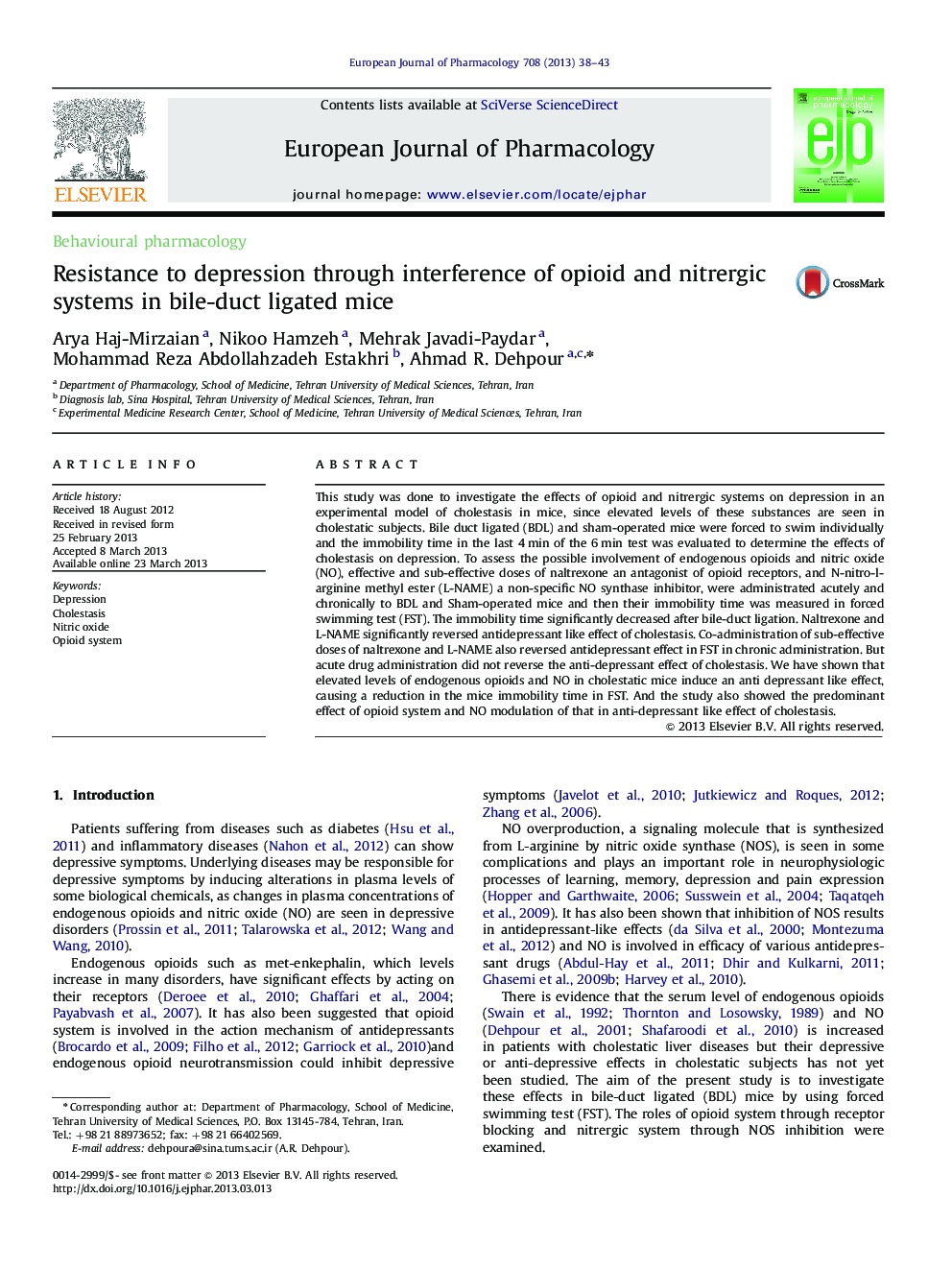| Article ID | Journal | Published Year | Pages | File Type |
|---|---|---|---|---|
| 5828645 | European Journal of Pharmacology | 2013 | 6 Pages |
Abstract
This study was done to investigate the effects of opioid and nitrergic systems on depression in an experimental model of cholestasis in mice, since elevated levels of these substances are seen in cholestatic subjects. Bile duct ligated (BDL) and sham-operated mice were forced to swim individually and the immobility time in the last 4Â min of the 6Â min test was evaluated to determine the effects of cholestasis on depression. To assess the possible involvement of endogenous opioids and nitric oxide (NO), effective and sub-effective doses of naltrexone an antagonist of opioid receptors, and N-nitro-l-arginine methyl ester (L-NAME) a non-specific NO synthase inhibitor, were administrated acutely and chronically to BDL and Sham-operated mice and then their immobility time was measured in forced swimming test (FST). The immobility time significantly decreased after bile-duct ligation. Naltrexone and L-NAME significantly reversed antidepressant like effect of cholestasis. Co-administration of sub-effective doses of naltrexone and L-NAME also reversed antidepressant effect in FST in chronic administration. But acute drug administration did not reverse the anti-depressant effect of cholestasis. We have shown that elevated levels of endogenous opioids and NO in cholestatic mice induce an anti depressant like effect, causing a reduction in the mice immobility time in FST. And the study also showed the predominant effect of opioid system and NO modulation of that in anti-depressant like effect of cholestasis.
Related Topics
Life Sciences
Neuroscience
Cellular and Molecular Neuroscience
Authors
Arya Haj-Mirzaian, Nikoo Hamzeh, Mehrak Javadi-Paydar, Mohammad Reza Abdollahzadeh Estakhri, Ahmad R. Dehpour,
